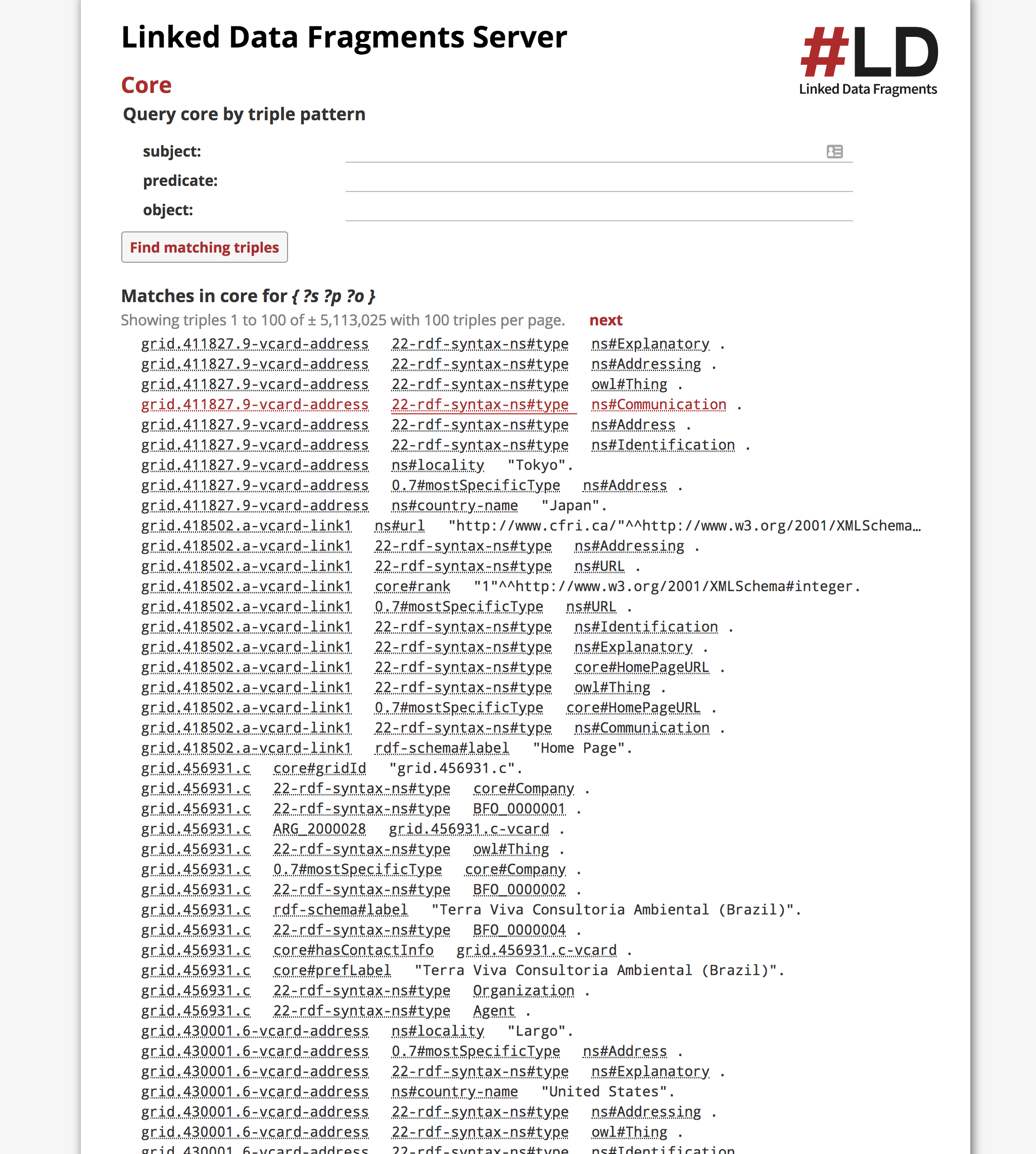VIVO Documentation
Page History
...
To use TPF manually, visit the TPF endpoint of a VIVO, http://vivo/tpf/core, where "vivo" is the web address of the VIVO of interest. In the example below we use http://openvivo.org/tpf/core You . You will see:
Notice that results are returned for the triple pattern fragment * * *. More than 5 million triples were returned, with the first hundred being displayed on the web page. Pressing "next" at the top of the list of triples will display the next hundred triples. Each of the rows in the display is a triple in the full graph. The TPF web page uses a display with simplifies the presentation of URI. Many of the URI are shortened, not with the use of prefixes, but merely by intelligently truncating the URI.
...
- There are many RO_0000053 predicates. These are "bearer_of" role assertions. See Ontology Reference for diagrams showing how VIVO uses roles and represents information. TPF can be a very good tools for exploring the data and learning about information representation.
- The sixth triple is an assertion that the subject in question is a person. At the bottom of the screen shot we see that the person has two labels. "Michael Conlon" and "Michael Conlon"@en-US. Is this something that is expected, or something that should be changed? TPF makes a good tool for discussing VIVO data practices with others.
- We see that the person is relatedBy an authorship. How many relatedBy assertions does this person have? We could issue a TPF query for the subject and for related by as a predicate. The results are shown below:
...
We see 102 triples are returned. Each indicates that the person is relatedBy to something else. We see some of the objects appear to be figshare related, others appear to be authorships, while still others non informative. additional Additional exploration might help us understand how the relatedBy assertions are used.
...
The Linked Data Fragments server can also resolve full SPARQL queries. The queries are decomposed into a series of TPF requests behind the scenes in the browser. The VIVO server sees only TPF requests. Each TPF request is handled quickly as previously described. To issue a SPARQL query using Triple Pattern Fragments, go to http://yourvivovivo/tpf where yourvivo is the web address of your VIVO. You will see a screen such as that below. Type in your query. You will need to provide the prefixes used in your query, as shown below. Press Execute, and the query is resolved a series of TPF queries. Results are presented dynamically.
...
curl can be used to issue triple pattern fragment queries and return RDF/XML. For example:
| Code Block |
|---|
curl http://openvivo.org/tpf/core |
...

